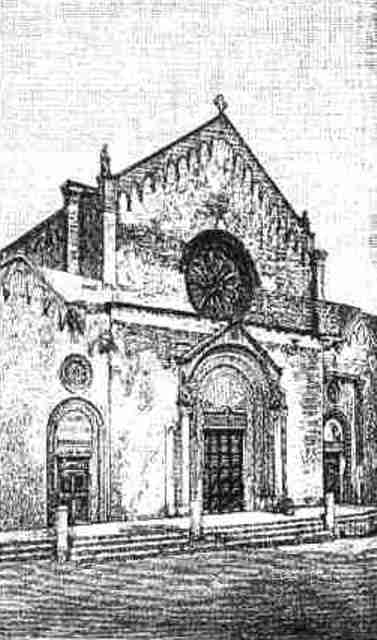|
|
Galatina
History
The Greek origins of this town are testified by its name and blazon. Its history has been documented since the 14th century, when it was ruled by the Angevins and Carlo d’Angiò (Charles of Anjou) who assigned the feud of San Pietro in Galatina to count Niccolò Orsini from Nola, husband of Maria Del Balzo. During the rule of the Orsini Galatina flourished and new town walls surrounded the town. The period of its full splendour corresponds to the rule of Raimondello Orsini Del Balzo, who, thanks to the services rendered to Pope Urbano VI, was allowed to build the church of S. Caterina, the monastery and the hospital. | |
The Orsini del Balzo were succeeded by the Castriota Scanderberg who led to a gradual economic impoverishment of the town; in their ducal palace, instead, the richest and most elegant courtly life in Apulia flourished. The Castriota were succeeded by the Sanseverino, Spinola and Gallarati-Scotti from Milan. |  |
The 17th and 18th century life is that of a tranquil town not marked by important cultural events. During the French period several feuds were annexed and the transformation of the cultural life from private to public was possible only thanks to Giuseppe Garibaldi and the liberal and enlightened middle class.
The town
| |
Porta Luce, Porta San Pietro and Porta Cappuccini are the three entrance doors to the old town. Galatina has a historic centre full of important churches as the Baroque church of San Pietro ( also known as Main Church) and the old-Romanesque beautiful Basilica of Santa Caterina with frescos painted by Venetian and Tuscan artists; today it is National Monument. | |
 | The heart of the town is the “Villa” the main square of the town with its “Lampada senza Luce” called “La Pupa”, a bronze statue belonging to the Fascist period scuplted by Gaetano Martinez (1892-1951) and shown at the Venice Biennial Exhibition in 1936. Many of his works are housed in the museum “Pietro Cavoti”. Another salient feature of the town, not far from the villa, is the little church of San Paolo. Legend has it that inside the church there is a well ( that is currently walled up for sanitary measures) whose water had the power to cure those who were bitten by spiders like “tarantula” Lycosa Tarentula, (“Tarante” in local dialect). |
Events, tradition and culture
By tradition the “tarantati” after being bitten by a kind of spider called “taranta”, needed to exorcise by frenzied dancing at home; then they went to the chapel to show their gratitude to the saint for the favoured grace.
| |
Only after having drunk the miraculous water and having vomited in the well, the grace could be considered granted and every year, on 28 June, they came back to “renew” the grace. Nowadays this old tradition has been lost and new, less characteristic festivals are held. | |
|
|
|
|